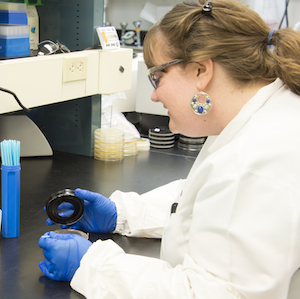blog
March 20, 2014 | Source: Rapid Micro Biosystems, Inc.
5 Considerations for Selecting an RMM System
POSTED BY Rapid Micro Biosystems | 4 minute read
March 20, 2014 | Source: Rapid Micro Biosystems, Inc.
POSTED BY Rapid Micro Biosystems | 4 minute read
 As the pharmaceutical industry continues to embrace lean principles in the quality control lab, companies are beginning to explore a variety of rapid microbiological methods (RMM) that streamline or replace the manual method for microbial testing. These systems vary in their method and technology. Quality Control managers must do their due diligence before determining the best fit for their lab. The following are five important factors for QC managers to consider as they build their case for an RMM system:
As the pharmaceutical industry continues to embrace lean principles in the quality control lab, companies are beginning to explore a variety of rapid microbiological methods (RMM) that streamline or replace the manual method for microbial testing. These systems vary in their method and technology. Quality Control managers must do their due diligence before determining the best fit for their lab. The following are five important factors for QC managers to consider as they build their case for an RMM system:
For growing businesses, one of the greatest benefits of certain RMM technologies is they allow microbiologists to run a high-volume of tests with less of the manual effort, and therefore fewer resources, than associated with the compendial method. Not all rapid methods are automated, so if this is a critical need, automated methods may be the best fit as some can offer multiple incubators and internal robotics which can automatically transfer, incubate, enumerate and report on hundreds of samples per day. This capability can be crucial for QC labs that perform high-volumes of environmental monitoring tests, or have increasing test needs and limited resources.
Because of the varying technologies used by rapid methods, some may leverage reagents that can destroy microbes during detection. This provides a rapid result, but creates the need to re-culture to identify the microbes in a sample of interest. Other technologies allow for the growth of colonies without destroying the sample, reducing the time to identification. The lab needs to determine the pluses and minuses of each method against their specific needs.
A new piece of technology can only be useful when well-trained personnel are operating it, and training requirements can vary between RMM systems. Some systems require major process changes that impact sample preparation as well as recording of results. In contrast, growth-based equipment that automates the compendial method allows users can employ the same or similar sample preparation techniques already in use. This can save training time during deployment and allows for more efficient training of new staff, most of whom will likely be familiar with the traditional method.
Microbiologists also need to consider the role of quality assurance in the implementation of an RMM system, as well as the time frame of the system’s installation and validation. Generally, the further a system deviates from the traditional method, the more time-consuming it will be for the lab to complete the validation process. Automated compendial systems, since they closely align to the traditional method, have a more streamlined validation process.
Finally, microbiologists, quality assurance personnel and even manufacturing staff will want to work with experienced, responsive RMM vendors who are partners during the installation, validation and routine use and can provide supplemental resources as needed. Each phase requires not only extensive product knowledge, but a deep understanding and experience of the daily workflows and challenges in the QC lab.
To learn more about the ins and outs of RMM technologies, download our free guide on rapid, automated enumeration and reporting.